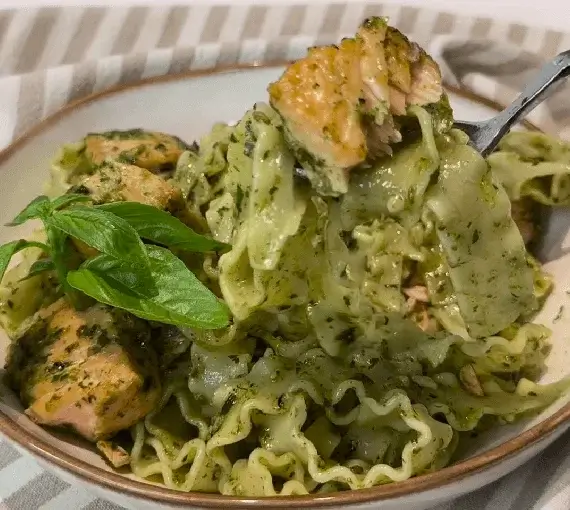15 Minute Incredibly Easy Salmon Pesto Pasta
We may earn a commission from recommended products, at no extra cost to you. See Disclosure.
INGREDIENTS
- 0.5 pound/300 grams skinless salmon fillets, cut into large cubes
- 0.5 pound/300 grams mafaldine pasta, cooked according to instructions on the package
- 5 garlic cloves, crushed
- 4 tablespoons olive oil
- 1 teaspoon salt
- ¼ teaspoon ground black pepper to taste
Pesto:
- 7 ounces/200 grams fresh basil
- ½ cup toasted pine nuts
- 4 garlic cloves, peeled
- ½ cup olive oil
- ½ teaspoon salt
- Lemon zest from ½ lemon
INSTRUCTIONS
- Wash the basil leaves thoroughly, and let them dry.
- In a food processor, place all the pesto ingredients except for the olive oil. Process to a paste-like consistency, gradually adding the olive oil during processing. Transfer to a tight container and store in the fridge.
- Heat a wide pan with 4 tablespoons of olive oil. Add the garlic and salmon cubes, sautéing together until the salmon cubes are golden on both sides (2-3 minutes per side).
- Add salt, black pepper, and 2 tablespoons of pesto, then stir. Add the cooked pasta and an additional tablespoon of pesto, stirring gently.
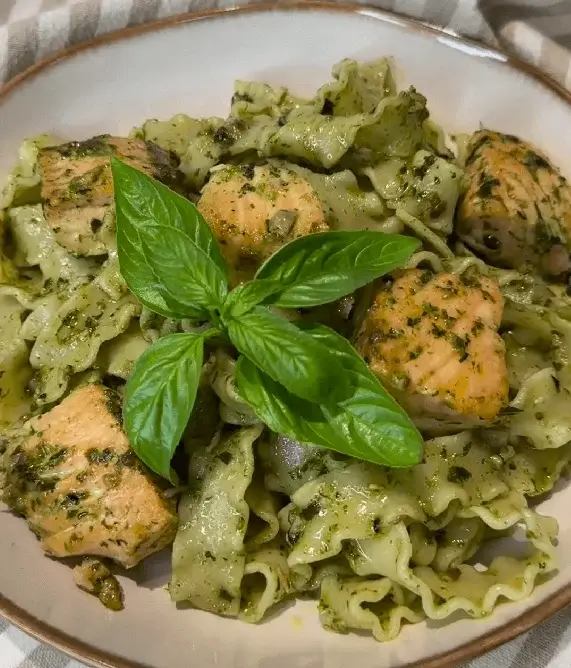
FAQ
What type of pasta works best for this salmon pesto pasta?
Opt for a pasta variety that can hold the robust flavors of the salmon and pesto, such as mafaldine, fettuccine, penne, or bowties. These shapes allow the pesto to cling to the pasta, creating a harmonious blend of textures and tastes in every bite. Consider whole wheat or spinach-infused pasta for added nutritional value and a subtle earthy note.

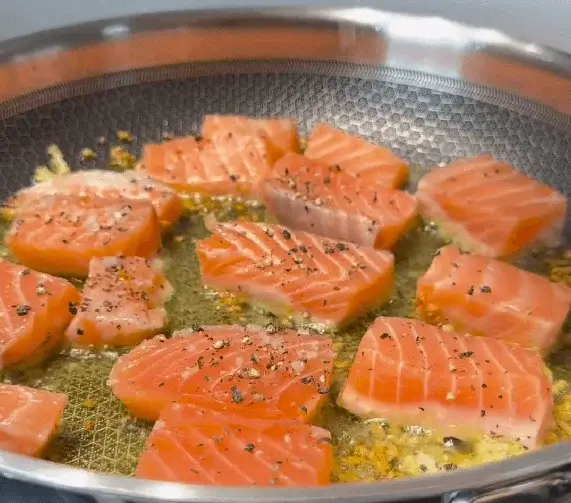
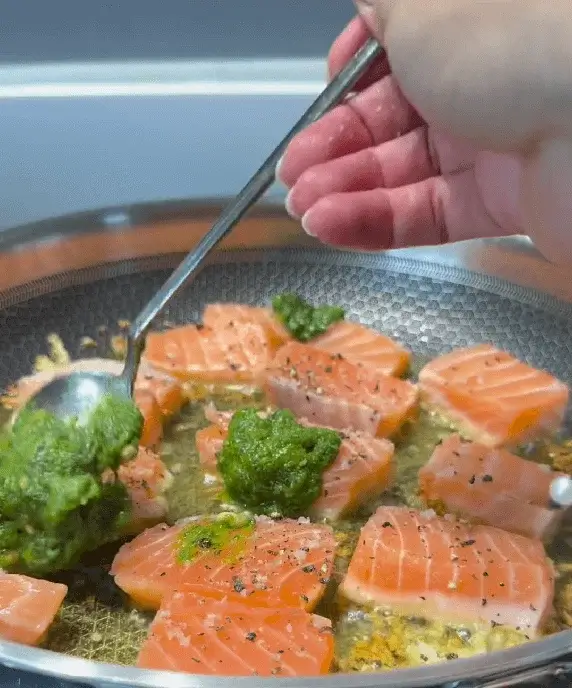
How to store leftover pesto for future use
Transfer any unused pesto to an airtight container, ensuring it’s tightly sealed to prevent air exposure. Drizzle a thin layer of olive oil on top to create a protective barrier against oxidation. Store the container in the refrigerator for up to one week. For longer storage, consider freezing the pesto in ice cube trays for convenient portioning. Once frozen, transfer the pesto cubes to a sealed freezer bag, and it can be kept for several months. Thaw frozen pesto in the refrigerator or use it directly in cooked dishes for a burst of fresh, vibrant flavor.
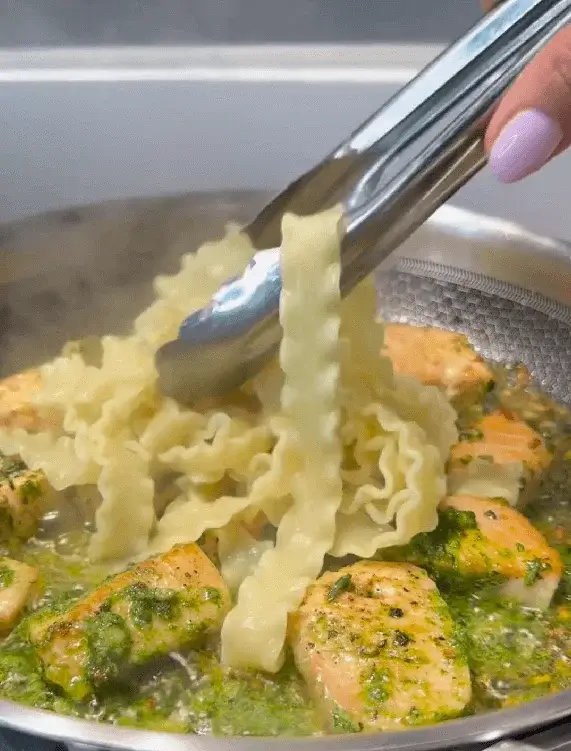
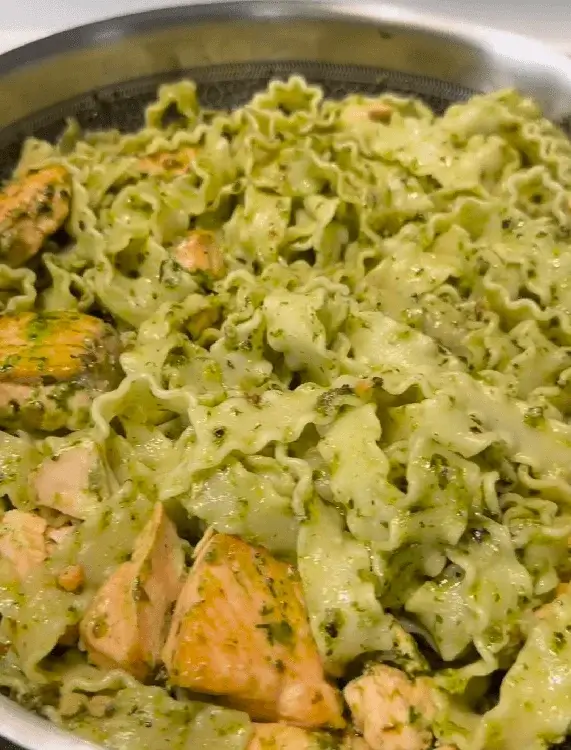
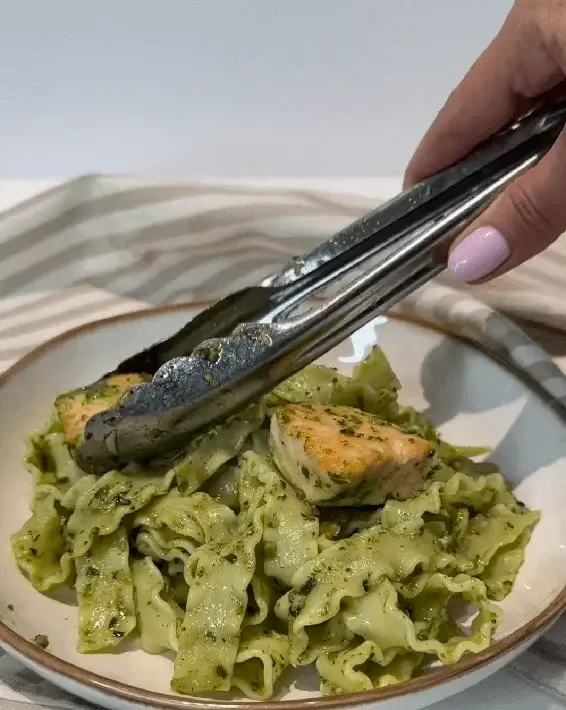
Tips for ensuring the salmon stays moist during cooking
Firstly, avoid overcooking; salmon is best when slightly translucent in the center. Use a medium heat to gently cook the fish, preventing it from drying out. Basting the salmon with its natural juices or a flavorful sauce during cooking adds moisture. Wrapping the salmon in foil or parchment paper helps to lock in steam, promoting a moist outcome. Additionally, marinating the salmon beforehand imparts extra flavor and moisture. Lastly, let the salmon rest briefly after cooking to allow the juices to redistribute.

What wine pairs well with this salmon pesto pasta?
Go for a crisp and aromatic white wine like Sauvignon Blanc. The wine’s herbaceous notes complement the basil in the pesto, while its acidity cuts through the richness of the salmon. Alternatively, a light Pinot Grigio or unoaked Chardonnay can enhance the dish’s flavors. If you prefer red wine, a light-bodied Pinot Noir with its red fruit undertones can offer a pleasing contrast.
